RAGING BULL (1980)
The life of boxer Jake LaMotta, whose violence and temper that led him to the top in the ring destroyed his life outside of it.
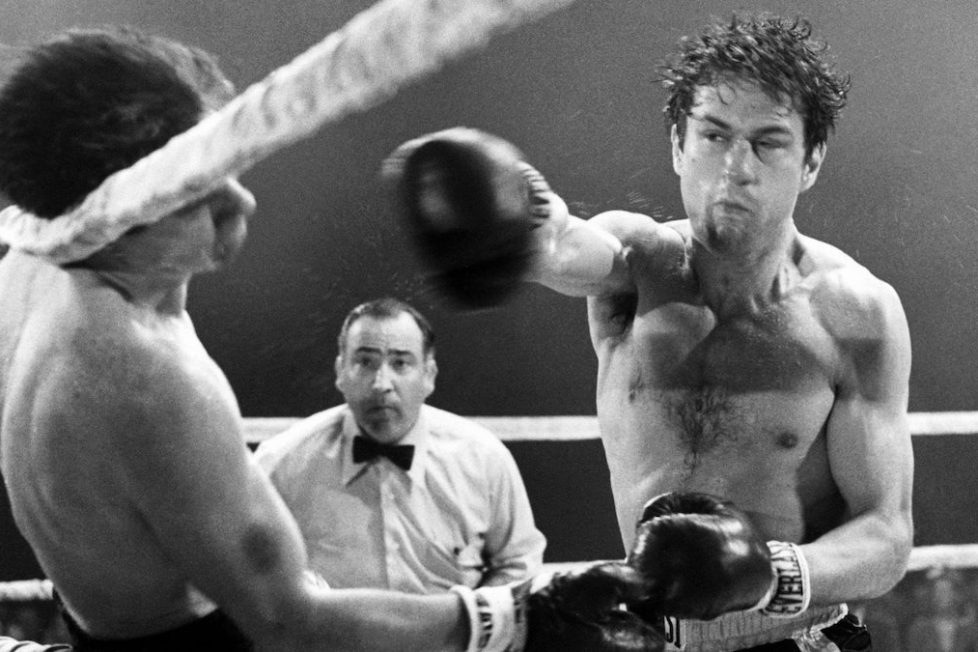
The life of boxer Jake LaMotta, whose violence and temper that led him to the top in the ring destroyed his life outside of it.


When I saw the film I was upset… I kind of look bad in it. Then I realised it was true. That’s the way it was. I was a no-good bastard. I realise it now.
These are the words of former boxer Jake LaMotta in a New York Times interview for Martin Scorsese’s Raging Bull, a film based on LaMotta’s memoir. The book was essentially a record of LaMotta’s entire life: his crime-riddled adolescence in the Bronx, his time as a 1940s middleweight boxing champion, his estrangement from his family, and finally, his piteous downfall. It’s a life so filled with Shakespearean bouts of turbulence, tragedy, and drama, it might as well be fiction.
What’s worth noting is that LaMotta seems not to have realised the weight and consequences of such a life, even after documenting it. Perhaps it was Robert De Niro’s portrayal of him or Scorsese’s cinematic virtuosity that provided a second opinion for LaMotta. Maybe he finally noticed the irony of just how much he craved some form of public attention. Perhaps it was finally revisiting his life through moving images instead of elusive memories that offered him this epiphany? Whatever the case, the film was effective enough to force its own subject to reevaluate himself… and it helped him see the reality of what he did to those around him.
Such is the stunning power of Scorsese’s masterpiece, and there’s probably a no better example of it. The filmmaker’s depicted characters like LaMotta numerous times throughout his career: Travis Bickle in Taxi Driver (1976) or Henry Hill in Goodfellas (1990), who have a penchant for violence and self-righteousness. These characters immerse themselves in a psychologically or socially deviant bubble where they seem to truly come alive—abandoning, even destroying, the world around them in the process. Unlike many of Scorsese’s other works and characters, however, Raging Bull deals its hand in starkness, expressionism, and brutality. It’s perhaps one of the first one of his films to indulge in such a tangible, living style.
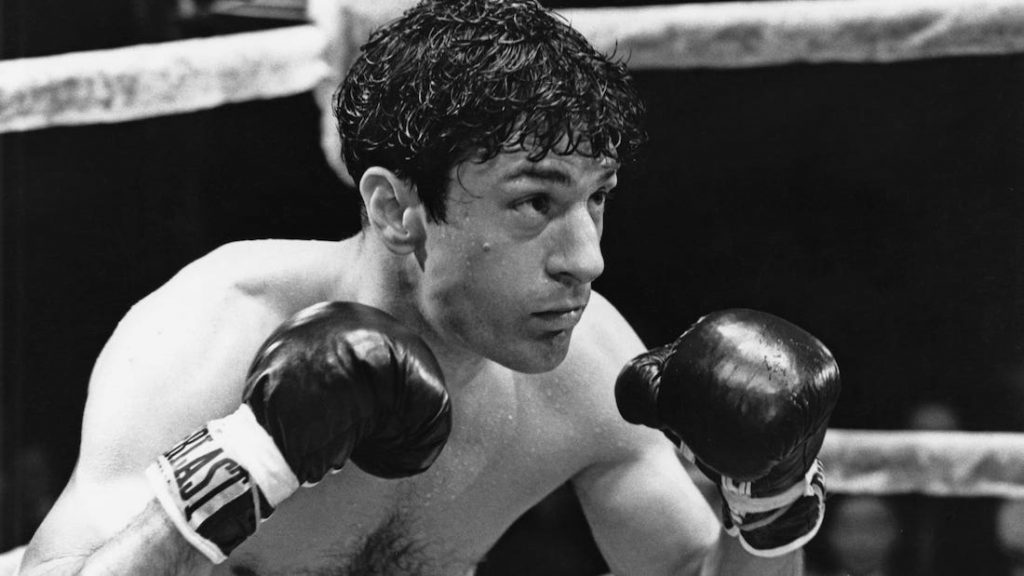
The film filters itself down to the meat of LaMotta’s memoir, namely the peak and subsequent downfall of his boxing career. The first we see of Jake LaMotta (Robert De Niro) is him in 1964, preparing for a stand-up routine , before the film catapults us back to 1940, where LaMotta, alongside his brother Joey (Joe Pesci), finds himself facing a humiliating defeat in the ring. Amidst his attempts to claw himself back to the top, he forms a relationship with a girl named Vickie (Cathy Moriarty), and marries her five years later, marking the start of his inevitable decline.
LaMotta morphs into an even more despicable character from this point onward, as it gradually becomes clear that the crux of his story is his abusive and controlling marriage. It’s a relationship riddled with bouts of obsessive sexual jealousy, which then exacerbates his tendency for violence— first against his middleweight opponents, then against his own family. Such violence is cinematically phrased in a strict dichotomy; inside the ring, the violence is impressionistic and sensory, stylized yet painful. Outside of it, however, that glamour is shattered, and the only thing the audience sees in detail is the vicious beatings and brawls that ensue.
The story behind Raging Bull’s production stretches back to the filming of Francis Ford Coppola’s The Godfather Part II (1974), where De Niro first started reading LaMotta’s memoir on set. Fascinated by his personality, De Niro brought it to Scorsese to adapt, who was initially unsure about making what he thought would be a generic sports movie. He repeatedly turned it down. It wasn’t until after Scorsese suffered a drug-induced haemorrhage that he became convinced of De Niro’s enthusiasm, having realised he suddenly related to parts of LaMotta’s character.
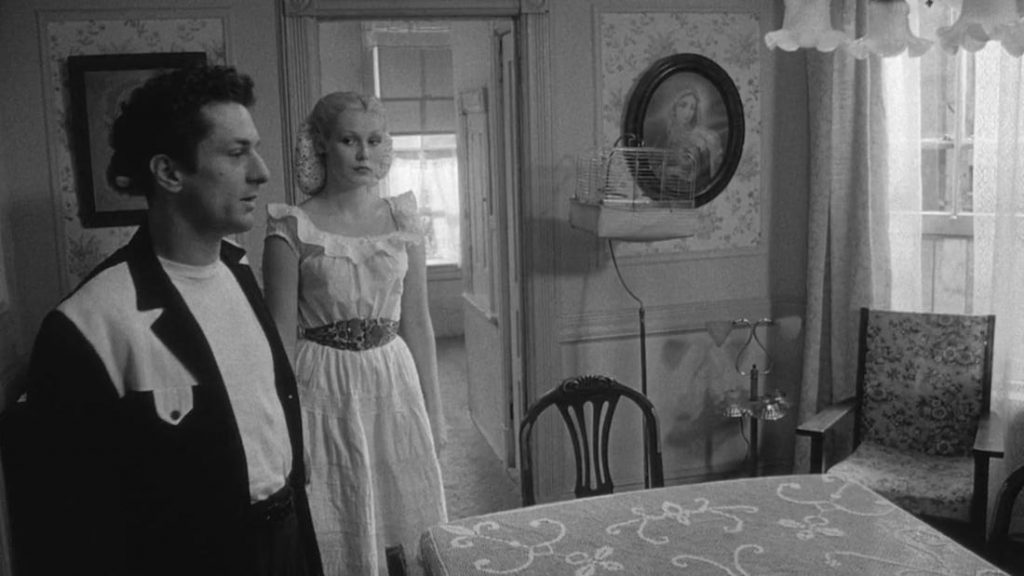
Raging Bull became not just an avenue for Scorsese to revive his then-uncertain career in film, but also to reflect on his near-death experience. It was a film that Scorsese poured every ounce of his being into making, convinced it would be a swansong to a career he thought was already finished. After all, his previous film—New York, New York (1977)—had been a commercial and critical failure, throwing the future of his Hollywood career into question. By 1980, he had absolutely nothing to lose.
This passion is plainly evident in how every facet of Raging Bull seems to fall into place. Perhaps most notable and acclaimed is De Niro’s spellbinding performance as LaMotta; expertly navigating between physical rage, mocking arrogance, and resentful shame. He’s constantly at the mercy of not only his mob sponsors but also the blinding jealousy that taints his marriage to Vickie. Everyone around him is seen as either parasitic or promiscuous; De Niro’s performance seems to be fully aware that LaMotta’s unrelenting violence is a result of a twisted worldview.
The supporting cast, of course, is what completes such an intense character study. Joe Pesci brilliantly portrays Joey LaMotta, Jake’s foul-mouthed, hair-trigger manager, constantly staying at his side in the ring while making and breaking mob connections on a dime. Cathy Moriarty, meanwhile, depicts Vickie LaMotta as someone who gradually finds herself reacting to and resisting Jake’s abuse; first terrified by his repugnant actions, then desperately trying to find a way to avoid them.
In an era where so many ‘tragic downfall’ narratives saturated the market, Scorsese and editor Thelma Schoonmaker did their best to make Raging Bull stand out. Its stylistic and dynamic black-and-white cinematography remains almost unparalleled, ingeniously conjoined with stunning uses of silence and sound in the ring. Scorsese and Schoonmaker push the limits of their medium to deliver a deeply cinematic experience; turning a seemingly standard, tragic narrative to something transcendent, surreal, and raw. It’s unsurprising to hear that many of these fight scenes took weeks to film, using thoroughly unconventional shooting techniques in order to heighten this effect.
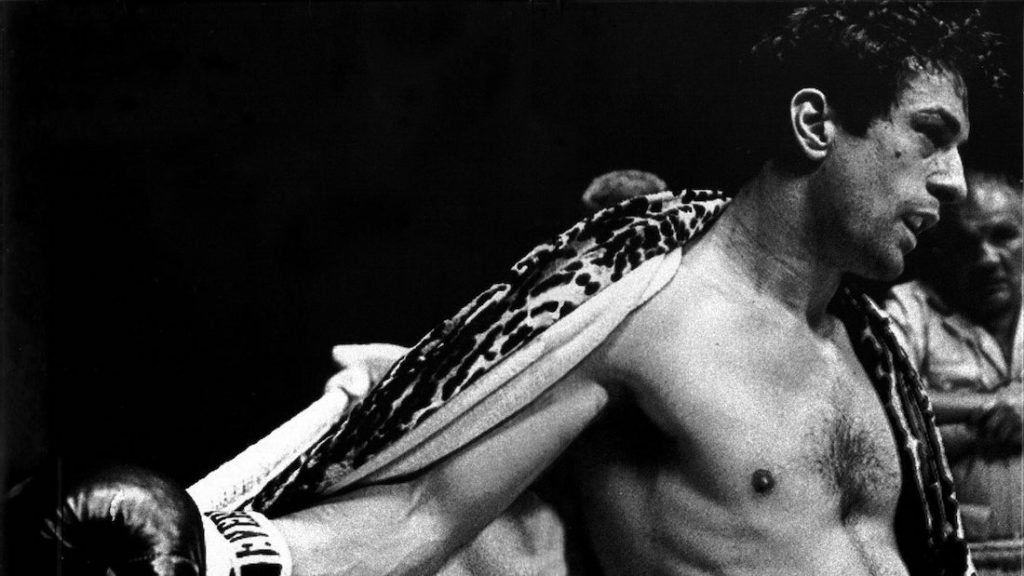
As is the case for most modern classics of this calibre, Raging Bull didn’t receive the classic status it now holds upon release. Much of the film served as a massive gamble—for instance, Pesci and Moriarty were unknown and new to acting—and the initial reception to it was lukewarm. It wasn’t until after the Academy Awards that the film began receiving further recognition. De Niro and Schoonmaker nabbed Oscars for ‘Best Actor’ and ‘Best Editing’, respectively, and the film’s improved reception propelled the careers of everyone involved.
Perhaps the person who experienced the most tangible impact from all the praise was Scorsese himself. Knowing just how much he found himself identifying with LaMotta after hitting his own rock bottom, the film’s closing quote of “once I was blind, but now I can see” takes on fresh meaning. It not only applies to LaMotta surviving the tumult of his life, but also to Scorsese discovering his true potential as a filmmaker after throwing everything into Raging Bull. This is the master who went on to create stunning films for the better part of four decades, who influenced countless filmmakers of future generations, and whose vision for cinema still remains unparalleled even to this day.
It’s no stretch to claim that Raging Bull gave us the Martin Scorsese we know today. In the final sequence of the film, an overweight, aged LaMotta quotes On the Waterfront‘s (1954) protagonist, Terry, reciting his iconic “I could have been a contender” speech; a piteous monologue about regret and wasted potential. Scorsese, however, knows what happens to Terry not long after that monologue… he ultimately becomes not just a contender, but a leader, and an inspiring figure of resilience.
USA | 1980 | 129 MINUTES • 121 MINUTES (TV EDIT) | 1.85:1 | BLACK & WHITE • COLOUR | ENGLISH

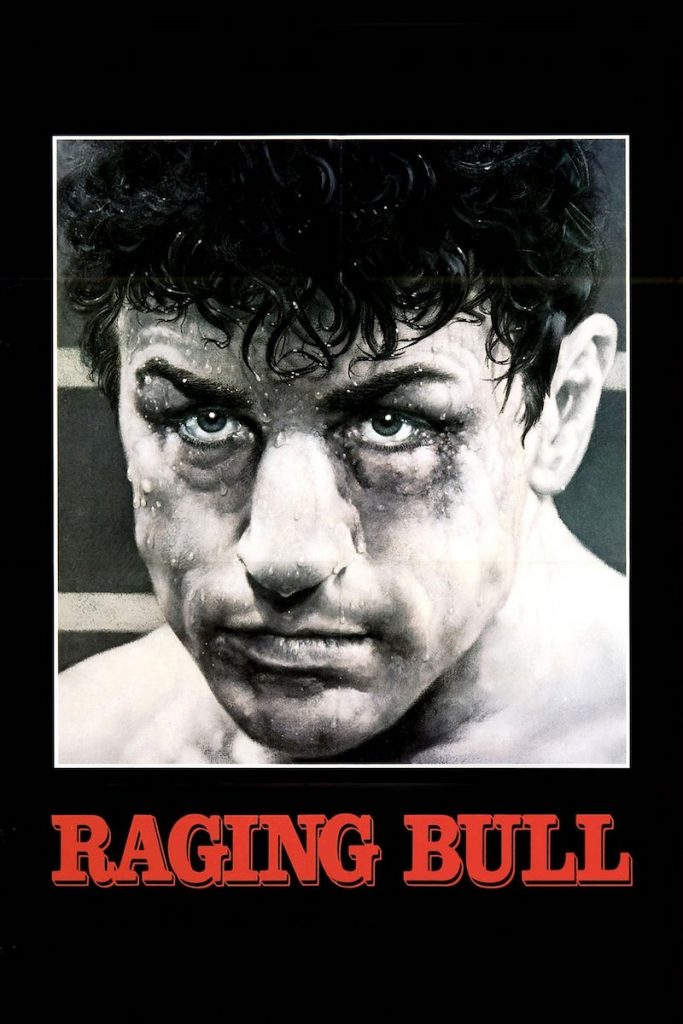
director: Martin Scorsese.
writers: Paul Schrader & Mardik Martin (based on the biography ‘Raging Bull: My Story’ by Jake LaMotta, Joseph Carter & Peter Savage).
starring: Robert De Niro, Cathy Moriarty, Joe Pesci, Nicholas Colasanto, Theresa Saldana, Frank Vincent & Lori Anne Flax.
